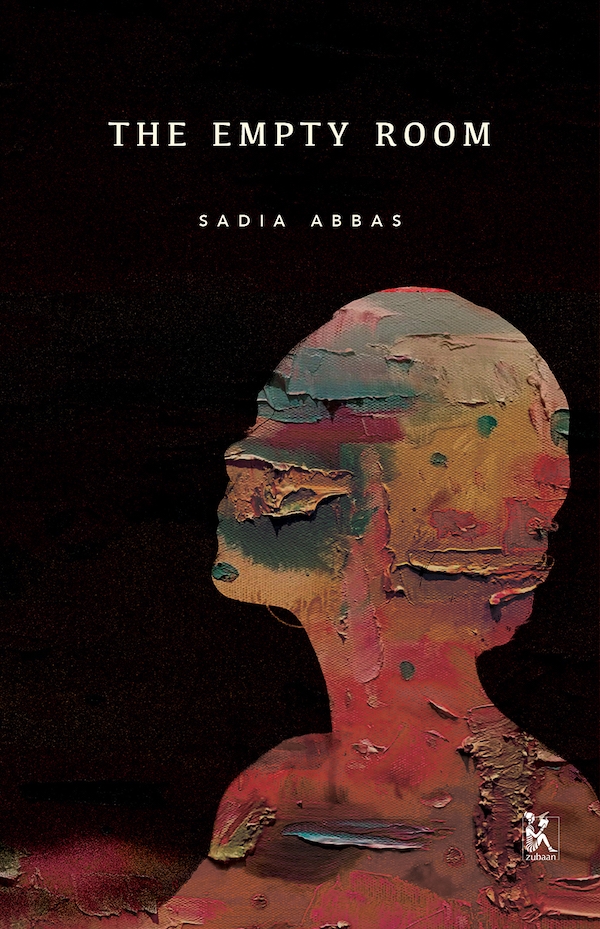What does it mean to feel emptiness in the midst of a busy life in Pakistan in the 70s? In a novel called The Empty Room, Professor Sadia Abbas tells us a story about what it means to be a waiting woman in a world that continues to unfold temporally. On Wednesday March 17th, NYU Performance Studies had the honor of hosting Professor Sadia Abbas, as well as translator John Keene, and artist Shahzia Sikander in a conversation about the novel and its influence on Pakistani literature. The event was moderated by Performance Studies Professor Fred Moten.
At first, Abbas wanted to call the book A Change of Color, but people ultimately convinced her not to (although at times she still wishes she would have stuck with the original title). The Empty Room follows the story of Tahira, a painter who feels trapped not only in her marriage, but also in the violent, political, and uncertain times of 1970s Karachi. For Tahira, painting becomes her outlet, and she embarks on the journey of creating a series of paintings entitled, “the empty room.” As the colors on her canvas become more vivid, so do the possibilities of her future.
The Empty Room is a book about claustrophobia if nothing else. Abbas wanted the incredible energy of Pakistan to be present in the book. There is a bustle, but also loneliness in that populated life. There is a state of women waiting. The Empty Room is simultaneously a book about the marriage plot and a book against it. It draws inspiration from artists and activists in 1960 Pakistan to tell the story of a woman who lives in this state of waiting while a revolution is underway just outside her doorsteps.
“The world is an empty room… emptiness is everywhere and nowhere.”
About the Book Discussion:
Professor John Keene asks ‘how do you signify the metaphor of an empty room?’ Keene speaks about Tahira’s paintings as a space of possibility to fill the room both literally and metonymically — the potential of space and how it can be filled. He mentions her paintings as a space to portray her interiority, and it is also a way for her to think through people in her life as she paints them. The act of painting, then, can be seen as a fight against the claustrophobia and a response to society at large. Keene applauds Abbas’ embodiment of painting as it is written on the page, which somehow allows us to visually see Tahira paint while also seeing who she is in the very same moment
Award winning painter, Shahzia Sikander, commented on Abbas’ use of boundaries, and how those spaces and places are activated within the novel. Sikander highlights for us how the notion of drawing the character can allow us as readers to become emotionally charged and invested in Tahira’s life. She alludes to painting as it reflects upon major artists during the 1960s and 70s and how the contextual details enrich our understanding of her character. Sikander alerts us to the ways in which Abbas uses the descriptions of paintings as a way to explore the boundaries of time as well, allowing us to reflect upon the ways in which writing can call for pause, for escape, and for change.
NYU Professor Fred Moten shares his own musings on the book, thinking through the character’s choices in the smallest of details. Moten tells us how Tahira makes us conscious of what it means to go against the grain, and what that internal process might be like at the level of color, flavor, and even the movement of the hand. He shares how the movement of the hand is actually a tactile representation of the experience of writing — it is in essence, the movement of thought. This representation of details then pushes us to think about the repetition and negation, and building of the postcolonial condition that the book is set in.
Sadia Abbas is an Associate Professor of English at Rutgers University who specializes in postcolonial literature and theory, the culture and politics of Islam in modernity, early modern English literature, and the history of 20th-century criticism. Abbas released her first book At Freedom’s Limit: Islam and the Postcolonial Predicament in 2014 won an MLA First Book Prize, and focused on a new “Islam” which formed around the first Gulf War of 1991 and consolidated in the period following the events of September 11, 2001. The Empty Room is Abbas’s second book and first ever novel.
Thank you all for joining us for a discussion about Sadia Abbas’ wonderful novel, The Empty Room! We offer special thanks to Professor John Keene, Artist Shahzia Sikander, and Professor Fred Moten for taking the time to share their reflections of the book with us. We congratulate Abbas on the North American release of the book as well!
Story by Aarlene Vielot and Shivani Joshi
